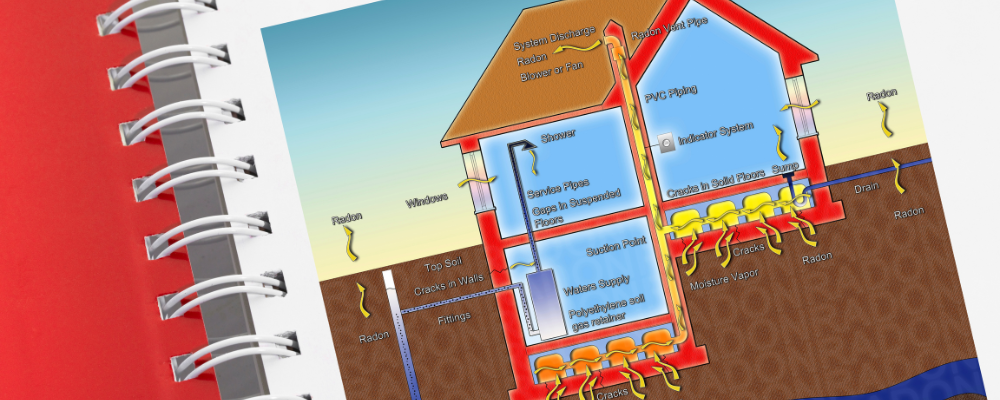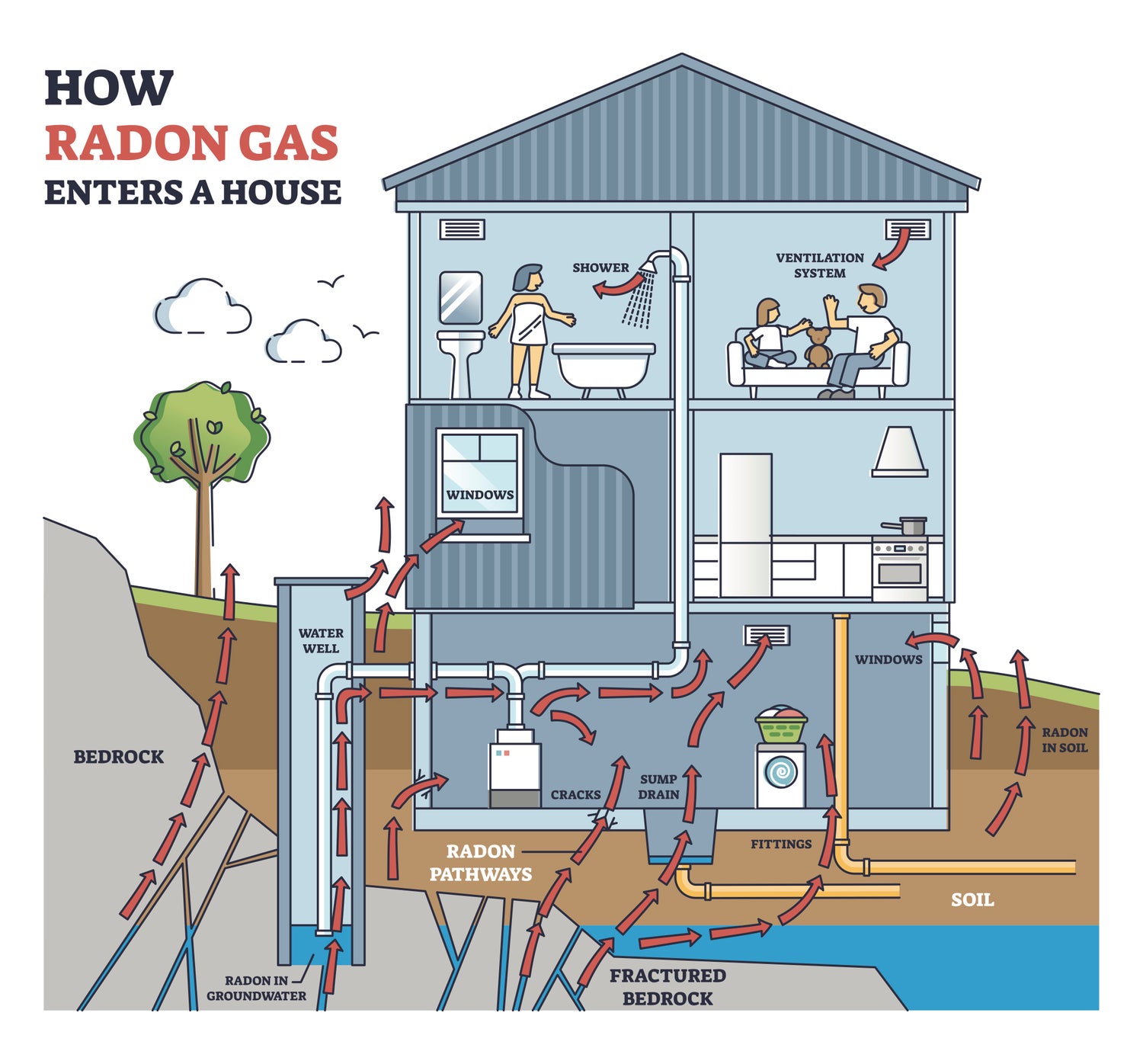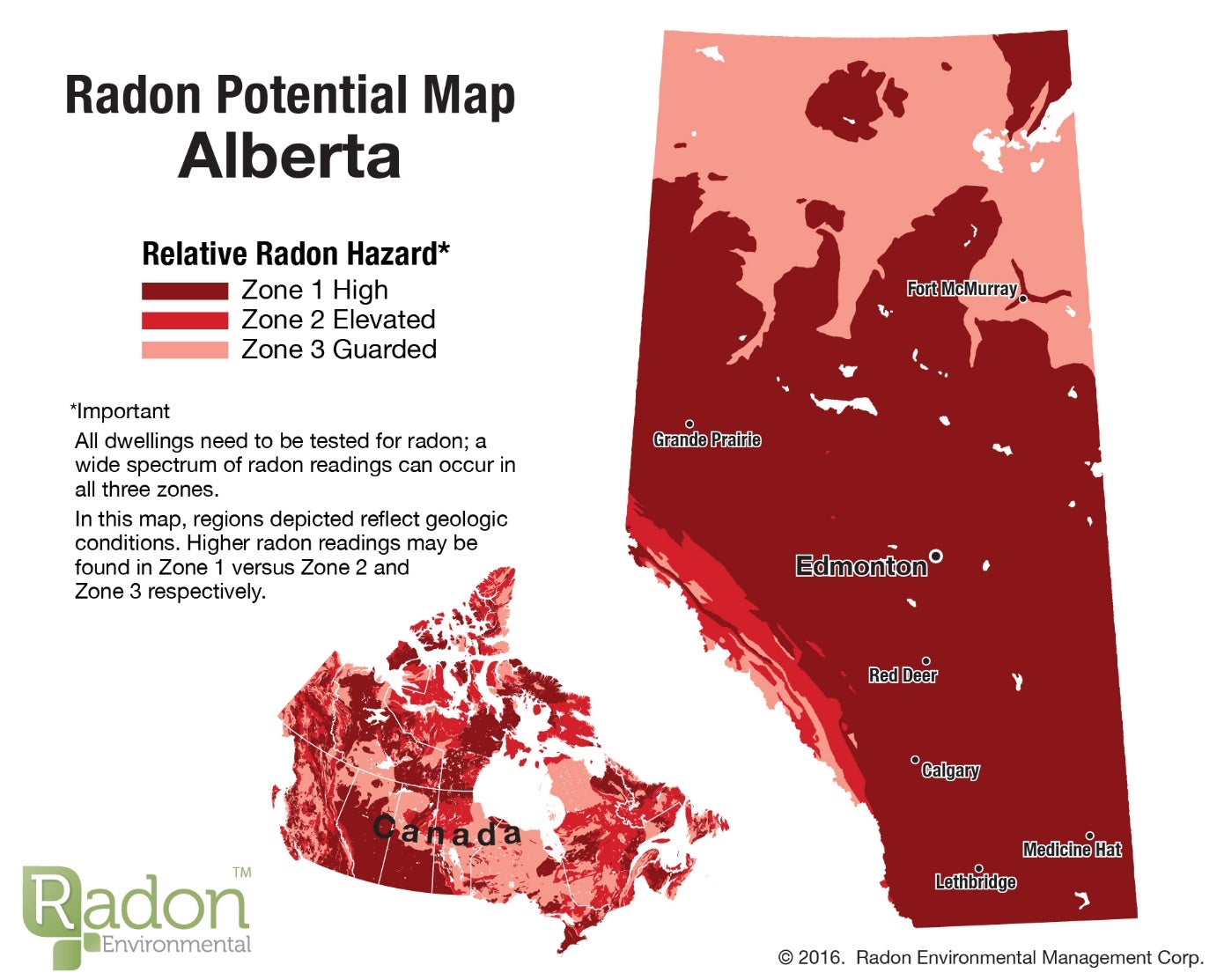
RADON TAKES ADVANTAGE OF ANY WEAKNESS
Radon comes from the decay of uranium in soil, which means it's in the sediment, the bedrock, and the groundwater, and it can come in through almost any material that has a crack, opening, hole, gap - you get the idea. It doesn't matter how new it is, it's impossible to have a house that's completely sealed because they need to breathe in order to withstand temperature fluctuations, natural settling, and changing pressures. This opens the door for radon to come through:
• wall cracks
• sump pumps
• floor cracks
• gaps around pipes
• gaps in suspended floors
• private wells
• groundwater supplies
• ventilation systems

WHY CALGARY IS A HIGH RISK AREA
Uranium occurs naturally in soil and rock formations, and places with higher than normal uranium deposits, such as Alberta and Saskatchewan, have higher radon levels. [Source] The risk of radon in Calgary, as seen below, is in Zone 1 High. Surveys done on houses in Calgary showed ~40% of houses tested were above 100 Becquerel per cubic meter, and ~11% tested above 200 Becquerel per cubic meter. 200Bq/m3 is deemed the highest safe level in Canada, while other countries, such as Norway, cap it at 100Bq/m3. Another 2019 study by the University of Calgary found approximately 1 in 7 houses tested above safe levels of radon, which is upwards of 14% of houses testing with unsafe levels of radon using the 200Bq/m3 benchmark.

TEST YOUR HOUSE
Since radon is so hard to detect without proper equipment, it's been dismissed by many for quite a long time, but it's important to remember all homes in Calgary are at risk for high levels. In an attempt to set houses up for successful mitigation should the need arise, updated building codes came into effect nearly ten years ago that required builders to install membranes, rough-ins, etc. While this has helped significantly to bring awareness to homeowners, mitigation still relies on individuals to do their due diligence, order the proper tests, and actually test their homes.
We can't recommend it enough: test your new house for radon. It's for your safety and your family's safety. It's also becoming a selling feature if you plan to sell in the future. More and more homebuyers are asking for radon test results before purchasing, so it's a great idea to have this done by the time you sell. Testing for radon will not only protect your family, but it will also protect your most valuable asset, your house.
Check out our previous blog for more information on the dangers of radon and how to test your home.